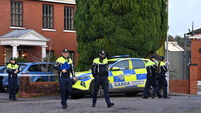Average house outside Dublin costs €250k as prices fall ‘gently’

The average house price in Ireland was lower at the end of 2019 than 12 months previously for the first time in six years, according to new research.
The final Daft.ie house price report of the decade shows that prices are now definitively falling across Ireland as a whole, albeit at a far slower pace compared to the freefall seen at the height of the recession in 2009. According to the report, prices at the end of December were 1.2% lower overall than those seen at the end of 2018.
When Dublin is excluded, the average asking price for the remainder of the country was €250,766, a drop of 2.4%.
However, that fall has not happened uniformly across the country — some 18 of the 54 markets covered by the report show prices either continuing to rise, or rising once more having receded to an extent.
In three of Dublin’s most sought-after area codes — Dublin 1, 2, and 4 — prices had been falling year-on-year earlier in 2019, but are now higher than they were 12 months previously at year-end.
Prices in Cork meanwhile dropped slightly, by 0.8%, to an average of €218,346, with Cork City representing the exact inverse of that trend, with asking prices up 0.8% to €278,021.
The trends seen are mixed across Munster, with prices down 1.9% and 3.6% in Limerick and Tipperary respectively, and up 0.4%, 0.7% and 2.4% in Kerry, Clare, and Waterford. The most expensive average across the southern province is €223,182 in Waterford.
Ronan Lyons, assistant professor in economics at Trinity College Dublin, said the skewed nature of prices may be able to give “some indication of the likely trends in sale prices for the coming quarters and years”.
“It was a decade that started with rapidly falling prices and closes with gently falling ones,” Mr Lyons said.
He added, however, that the nosediving prices of 2010 were symptomatic of a “painful necessary correction” created by the exaggerated statistics surrounding home- ownership in Ireland at that time, fuelled by a bubble of easy credit.
Mr Lyons said all indications are that the sales market in Ireland is “by and large, in balance” at present.
“In that sense, slightly falling sale prices reflects greater affordability and, if housebuilders are becoming more efficient, greater viability,” he said, adding it is the rental market that is the primary source of the country’s housing issues.
Some 69,000 properties were listed for sale in Ireland across 2019, compared with the recession-era level of 33,000 in 2012, while the number of newly-built homes sold in 2019 is expected to be roughly 10,000, a more than 300% increase on the levels seen seven years previously.
Mr Lyons said the wave of construction seen over the past three years is “at least in part, a story of the construction of new homes recovering”.
The most expensive areas to live in meanwhile remain, perhaps unsurprisingly, in the capital. It costs €566,776 to purchase a house in south county Dublin, and €402,596 in the south of the city.
The northside of Dublin city has an average asking price of €338,291, while a city centre property costs €321,802 on average.
Some 70% of new homes sold throughout the year were in the greater Dublin area.
The least expensive property to be found in more rural areas — in Leitrim, Longford, Roscommon, and Donegal — with average asking prices of, respectively, €125,603, €132,787, €134,010, and €138,869.













